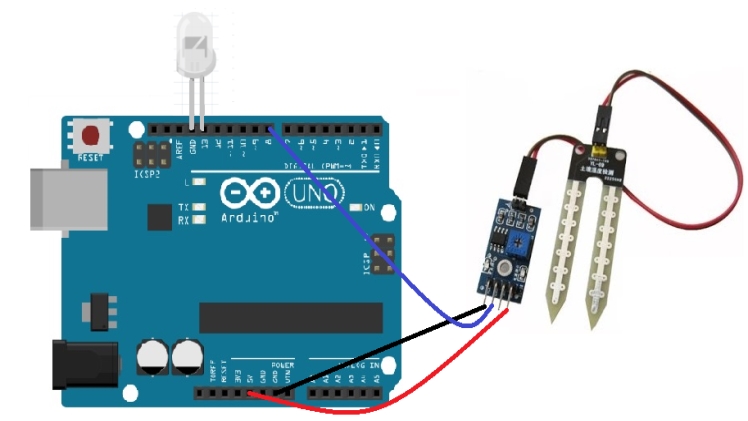Are you looking for Lora Soil Moisture Sensor so you can find the best moisture sensor according to your need? Soil Moisture Sensor is a new monitoring system for soil moisture and health. It can be installed in urban and rural areas and uses sensors to measure the soil’s moisture content, which helps farmers make better decisions about managing their farms. A soil moisture sensor is a device that measures soil moisture. The sensor can determine the moisture content of soil or other solid materials, such as concrete or rock.
The Lora soil moisture sensor is usually installed in an automatic irrigation system to monitor the water levels in the soil at various depths. The information obtained by this device will help you determine when to irrigate and how often. This system can also save water by automatically adjusting the amount of water applied to each plant based on its needs at any given time.
Installation and Assembling of Soil Moisture Sensors:
The Lora Soil Moisture Sensor comes in two pieces: the sensor itself, which you’ll need to install on your property, and an app you’ll need to download on your phone or tablet. The process is pretty simple: follow these steps:
- First, download the app onto your device.
- To install the Soil Moisture Sensor, you’ll need a screwdriver, a drill bit and a ruler.
- Place the sensor on top of your soil and use a ruler to mark a circle.
- Then, carefully drill a hole through the soil using your drill bit and screwdriver.
- Once that’s done, you can place your sensor in the hole for it to start working!
Installation Process:
Make a short eye view on the Lora Soil Moisture installation process. It is a very simple process, but it does take some time.
- Have the Soil Moisture sensor on hand.
- Connect your Soil Moisture sensor to your computer using the included USB cable.
- Open the Arduino IDE and open the example sketch provided by Soil Moisture.
- Upload the example sketch to your Soil Moisture sensor and press “Upload.”
Superiority of Soil Moisture Sensor:
We mention the superior Lora Soil Moisture Sensor below to get detailed information.
- With the help of a soil moisture sensor, you can check your land whether it is raining or not. You can also find the percentage of water in your soil and manage it accordingly. You can also monitor the condition of your fields and crops in real-time.
- A soil moisture sensor is a good way to monitor soil moisture and make sure the soil doesn’t get too wet.
- The sensor is inserted into the ground and measures temperature and moisture changes. This way, you can know if the ground around your plants is getting too dry or too wet.
First Test the Soil:
It can be used to measure the physical properties of soil, such as water content, temperature and pressure. The Lora Soil moisture sensor covers all the information you need about soil moisture. The sensor will work with any soil and is designed to be easy to install and use. Soil moisture is a vital component of plant health. When the soil is dry, plants have to use up more of their resources to stay alive and healthy. It can lead to several negative effects, including:
- Fungal and bacterial growth (which makes plants sick)
- Less water absorption from the root system (which means you’ll have to water more often)
- Less air exchange through the canopy during transpiration, which means your plants will be hotter than normal because they can’t cool off as much
Conclusion:
The above discussion will surely help you understand and learn the installation of soil moisture sensors. By reading Lora Soil Moisture in detail, you can learn about this is a very important thing for growing plants and can determine the success of the whole garden. Soil Moisture Sensor helps you monitor the moisture levels in your soil and detect when it needs watering. The Lora Soil Moisture Sensor is waterproof, easy to set up and use, and requires no maintenance. The soil moisture sensor aids in good irrigate Management, which helps to provide better crop input. What’s happening in the root zone is that crops are grown healthily.

